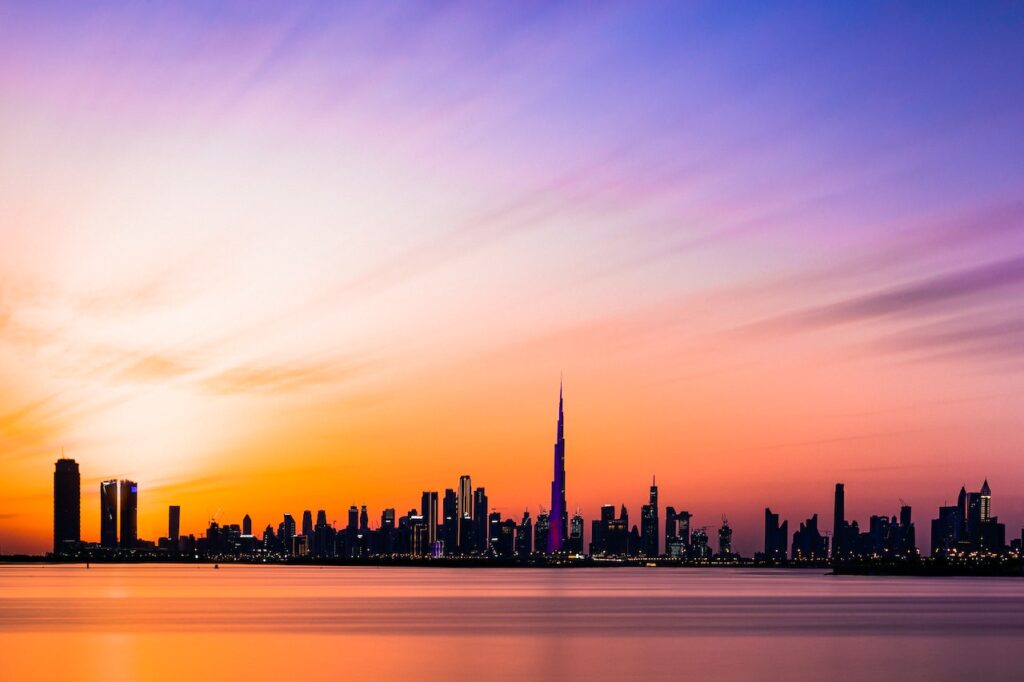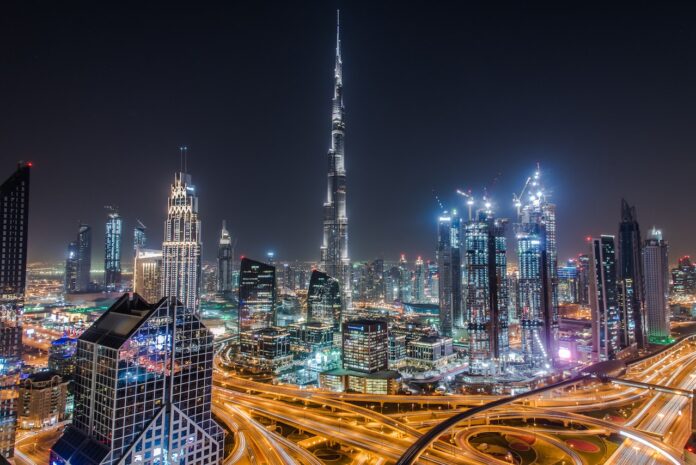Dubai, a city known for its audacious architectural marvels and boundless ambition, is home to one of the world’s most iconic and breathtaking structures – the Burj Khalifa. Soaring high into the Arabian sky, the Burj Khalifa isn’t just a skyscraper; it’s a symbol of human innovation and ambition. In this article, we’ll delve into the fascinating world of the Burj Khalifa, exploring its origins, design, engineering feats, and its place in Dubai’s vibrant landscape.
Rising from the Sands: The Birth of Burj Khalifa
The idea for the Burj Khalifa, initially known as the Burj Dubai, was conceived during a period of unprecedented economic growth in the United Arab Emirates. Dubai’s leaders saw an opportunity to showcase the city’s emergence as a global hub for finance, trade, and tourism by constructing an architectural marvel that would leave the world in awe.
Construction on the Burj Khalifa began in 2004, and the skyscraper was officially opened to the public on January 4, 2010. It was renamed in honor of Sheikh Khalifa bin Zayed Al Nahyan, the President of the United Arab Emirates and ruler of Abu Dhabi, who provided crucial financial support during Dubai’s financial crisis.
Design and Architecture: A Modern Masterpiece
The Burj Khalifa is not just a testament to human engineering; it’s a work of art. Its design, conceived by the architectural firm of Adrian Smith at the renowned Skidmore, Owings & Merrill, marries cutting-edge technology with a nod to Islamic architectural traditions.
The tower features a stepped, tiered design that draws inspiration from traditional Islamic patterns found in regional architecture. Its tapering form, resembling a delicate stalagmite, is not just aesthetically pleasing but also serves a practical purpose. The narrowing structure helps reduce wind resistance and enhances the building’s stability, allowing it to withstand the harsh desert winds.
The exterior of the Burj Khalifa is clad in reflective glazing and aluminum panels, creating a shimmering effect that mimics the play of light on the surface of the Persian Gulf. The tower’s exterior lighting is a marvel in itself, with a dynamic LED system that illuminates the structure in a dazzling array of colors, transforming it into a mesmerizing spectacle against the Dubai night sky.

Engineering Marvels: Building the Tallest Tower
What truly sets the Burj Khalifa apart are the groundbreaking engineering achievements that make it the tallest freestanding structure on Earth. Here are some of the key engineering marvels that define this skyscraper:
Foundations in Sand: Building on Dubai’s desert sands presented a unique challenge. To ensure stability, engineers had to create a colossal foundation consisting of reinforced concrete piles drilled deep into the ground. The foundation alone required more concrete than the entire Hoover Dam.
High-Strength Concrete: The Burj Khalifa’s core is constructed using high-strength concrete, specifically designed to withstand the immense pressures at great heights. This concrete is not only incredibly strong but also resistant to the extreme temperatures of the desert.
Cutting-Edge Elevators: The tower boasts some of the world’s fastest elevators, reaching speeds of 10 meters per second (33 feet per second). These elevators use cutting-edge technology to provide a smooth and comfortable ride for visitors.
A Stunning Height: At its tallest point, the Burj Khalifa stands at a mind-boggling 828 meters (2,717 feet). To reach such heights, engineers had to develop new construction methods and materials capable of withstanding the extreme conditions found near the top of the tower.
Energy Efficiency: The Burj Khalifa incorporates numerous energy-efficient features, such as a reflective glazing system to minimize heat gain from the sun. It also collects condensate water from its cooling system for irrigation, reducing water consumption.
Burj Khalifa as a Cultural and Entertainment Hub
The Burj Khalifa isn’t just a skyscraper; it’s a multifaceted destination that caters to a wide range of interests. Here are some of the experiences you can enjoy within this modern marvel:
Observation Decks: At the 124th and 148th floors, the Burj Khalifa offers observation decks that provide breathtaking panoramic views of Dubai. Visitors can witness the city’s transformation from a desert outpost to a metropolis of the future.
Fine Dining: The tower houses a selection of world-class restaurants, including At.mosphere on the 122nd floor, offering diners a luxurious culinary experience with unmatched vistas.
The Dubai Fountain: Adjacent to the Burj Khalifa lies the mesmerizing Dubai Fountain, a synchronized water and light show set in the artificial lake at the base of the tower. The performances, set to music, are a nightly spectacle not to be missed.
Residential and Corporate Spaces: The Burj Khalifa is not just a tourist attraction; it’s a place where people live and work. It features luxurious apartments and corporate offices, making it a vibrant and thriving vertical city.
Burj Khalifa’s Role in Dubai’s Identity
The Burj Khalifa is more than just an architectural wonder; it’s an integral part of Dubai’s identity. It serves as a symbol of the city’s relentless pursuit of excellence and its commitment to pushing the boundaries of what is possible.
Dubai, once a modest trading hub, has transformed into a global powerhouse, attracting people from around the world with its promise of opportunity and innovation. The Burj Khalifa stands as a physical manifestation of this transformation and a testament to the city’s determination to reach new heights.
Sustainability and the Future of the Burj Khalifa
As the world grapples with environmental challenges, sustainability has become a central focus for developments like the Burj Khalifa. The tower incorporates various green features, including efficient water and energy management systems, which help reduce its environmental impact.
Looking ahead, the Burj Khalifa’s owners and developers are exploring ways to further enhance its sustainability and energy efficiency, aligning with Dubai’s broader commitment to a more sustainable and greener future.
Conclusion: Touching the Sky, Inspiring the World
The Burj Khalifa is more than a towering edifice of steel and glass; it is a testament to human ingenuity, vision, and determination. It encapsulates Dubai’s audacious spirit and its unwavering commitment to pushing the limits of what is possible. The world will continue to look up to the Burj Khalifa, not just for its breathtaking height but for the inspiration it offers – the belief that with innovation and persistence, we can touch the sky, quite literally, and achieve the extraordinary.


